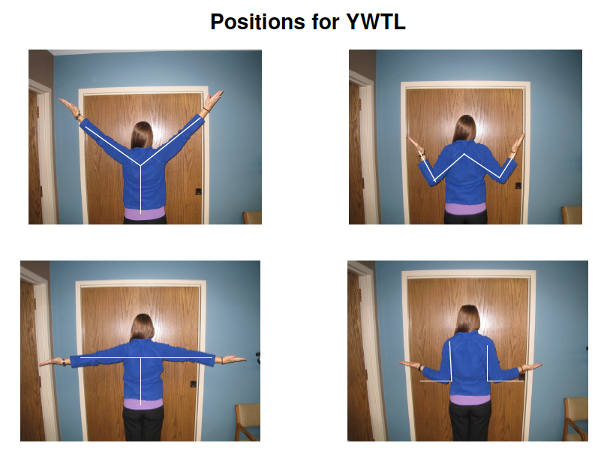Over time, poor posture may be caused by habits from everyday activities such as sitting in office chairs, staring at the computer, cradling a cell phone, carrying a purse over same shoulder, driving, prolonged standing, caring for small children, or even sleeping.
Poor posture can easily become second nature. Poor posture can cause episodes of back and neck pain potentially leading to damaged spinal structures. Fortunately, the main factors affecting posture and ergonomics are completely within one’s ability to control and are not difficult to change.
Back pain may be the result of poor ergonomics and posture if the back pain is worse at certain times of day or week (such as after a long day of sitting in an office chair in front of a computer, but not during the weekends); pain that starts in the neck and moves downwards into the upper back, lower back, and extremities; pain that goes away after switching positions; sudden back pain that is experienced with a new job, a new office chair, or a new car; and/or back pain that comes and goes for months.
The following guidelines suggest several ways to improve posture and ergonomics, especially for people who work sitting in an office chair for most of the day.
Sitting
While sitting in an office chair, take advantage of the chair’s features. Sit up straight and align the ears, shoulders, and hips in one vertical line. Any prolonged sitting position, even a good one, can be tiring. Shifting forward to the edge of the seat with a straight back can alternate with sitting back against the support of the office chair to ease the work of back muscles.
Some people benefit from a naturally balanced posture that is achieved by sitting on a balance ball; in this posture the pelvis is rocked gently forward increasing the lumbar curve which naturally shifts the shoulders back (similar to sitting on the edge of a chair seat).
Also be aware of and avoid unbalanced postures such as crossing legs unevenly while sitting, leaning to one side, hunching the shoulders forward, or tilting the head.
As muscles tire, slouching, slumping, and other poor postures become more likely; this in turn puts extra pressure on the neck and back. In order to maintain a relaxed yet supported posture, change positions frequently. One way is to take a break from sitting in an office chair every half hour for two minutes in order to stretch, stand, or walk.
Proper corrective eyewear, positioning computer screens to your natural, resting eye position can also help to avoid leaning or straining the neck with the head tilted forward.
Supportive ergonomic “props” like portable lumbar support or rolled up hand towel or small pillow can help to take the strain and load off of the spine. Ergonomic office chairs or chairs with an adjustable back support can be used at work.
Standing
When standing for long periods of time, prop a leg up on a foot rest, wear supportive shoe orthotics, or place a rubber mat on the floor to improve comfort. When standing, distribute body weight evenly to the front, back, and sides of the feet. Avoid regularly wearing high-heeled shoes, which can affect the body’s center of gravity and induce compensatory alignment of the entire body, thus negatively affecting back support and posture.
Becoming aware of posture and ergonomics at work, at home, and at play is a vital step towards instilling good posture and ergonomic techniques. This includes making conscious connections between episodes of back pain and specific situations where poor posture or ergonomics may be the root cause of the pain.
Using purses, bags, and backpacks that are designed to minimize back strain can also influence good posture.
Use exercise to help prevent injury and promote good posture.
Regular exercise such as walking, swimming, or bicycling will help the body stay aerobically conditioned, while specific strengthening exercises will help the muscles surrounding the back to stay strong. These benefits of exercise promote good posture, which will, in turn, further help to condition muscles and prevent injury.
There are also specific exercises that will help maintain good posture. A balance of core muscle and back muscle strength is essential to help support the upper body and maintain good posture.
One exercise to try is the YWTL.
YWTL
The purpose of the YWTL exercise is to strengthen the rhomboid muscles, between the shoulder blades. This will help improve posture by holding the shoulders back. This will also stretch the pectoral muscles and open up the chest.
At each letter, squeeze the shoulder blades together (imagine you are trying to squeeze an egg between your shoulder blades) for a count of 10 seconds and repeat each letter twice.

